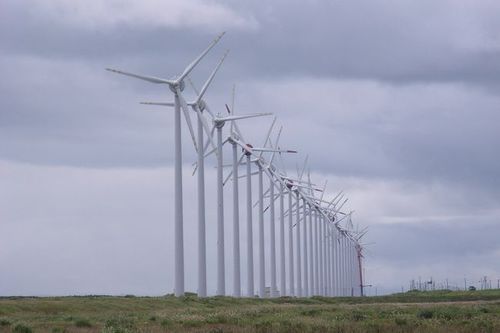JFS Newsletter No.178 (June 2017)

Image by Pexels.
Efforts to shift to circular economies (regenerative economic systems) are accelerating globally in response to resource depletion and the increasing need to reduce waste and carbon dioxide emissions.
One of the various approaches to create a circular economy is to introduce a business model known as "Product as a Service (PaaS), which promotes the business concept of selling services, rather than products.
For example, an electric drill is often found in the household toolkit in the United States as it is a common do-it-yourself tool. One study found that total time a typical drill was actually used for drilling averaged around 30 minutes during its lifetime. In this case, a key question is whether people want the drill itself, or whether they want a hole. Unless they are drill collectors, the typical answer would probably be that they want a hole. If so, the business model to sell not drills but a service to drill holes would be feasible. Car-sharing, a business that is growing in popularity globally in recent years, is a business model of this kind. Its concept is to sell not the car itself but the "mobility" provided by the car.
This business model was introduced by one Japanese company 16 years ago, and since then it has been pursuing the approach of selling a service, not a product. Here, we introduce the company, its achievements, and how effectively the business model has worked.
Test to Stabilize Wind Power Output Using Compressed Air Energy Storage Gets Underway in Japan

Image by studio tdes. Some Rights Reserved.
A team of engineers from the New Energy and Industrial Technology Development Organization (NEDO), Waseda University, the Institute of Applied Energy, and Kobe Steel Ltd. announced on April 20, 2017, the launch of verification testing of a Compressed Air Energy Storage (CAES) system in Kawazu, Shizuoka Prefecture, in central Japan. The goal is to stabilize wind power output, which is likely to fluctuate with changing wind conditions, for use on electrical grids.
The CAES compresses air using power from wind turbines and stores it in a tank at high pressure. When electricity is needed, the compressed air activates a generator to produce electric power. The system is composed of commercially available equipment for higher reliability, avoids use of rare metals and harmful substances, and is environmentally clean as it discharges only air and water. It also stores the heat generated while compressing air and recycles it for higher charge-discharge efficiency.
Two new control technologies were developed for the system: one is power fluctuation suppression, which is to control the charge and discharge process to minimize changes in wind-generated power supplied to the electrical grid; and the other is planned power generation control, which is to control the charge and discharge process to minimize differences between power generation plans and actual generation.
The system undergoing testing is connected to Tokyo Electric Power Company's Higashi-Izu power plant, an 11-turbine, 18,370-kW wind farm that began operating in August 2015. The team aims to ready its output fluctuation control technology for commercial use by the end of FY2018.
NEDO Releases First Web-Based Integrated Wind Information System 'NeoWins' for Supporting Offshore Wind Energy Development in Japan

Image by Lars Christopher Some Rights Reserved.
Japan's New Energy and Industrial Technology Development Organization (NEDO) released on its website the national version of its offshore wind information system, NeoWins, which covers all oceans close to Japan on March 23, 2017. This is Japan's first offshore wind resource map to provide information on wind conditions, which is essential for planning offshore wind power generation plants, as well as on the natural and social environment.
The data on wind conditions provided by this system are based on high-accuracy simulations using meteorological models and offshore wind data collected by satellites. The information includes data on coastal areas and on ocean areas 30 kilometers or more beyond the coast. Using this system, wind power generation capacity can be simply calculated by inputting output-characteristics of a wind mill and the longitude and latitude of its installation site.
NeoWins also integrates multiple information sources on the natural and social environment. The information it provides on the natural environment includes water depth, marine geology, coral reef areas and habitats of birds, and with regard to the social environment, it provides information on national and quasi-national park areas, fishery rights, shipping routes, etc.
NEDO has been developing the map since 2015, and in 2016, it released a demonstration version that provided limited data on the ocean area off the coast of Choshi City in Chiba Prefecture. At the completion of the national version, NEDO expects active utilization of this system by businesses and local governments that are planning offshore wind power generation projects.
Japan for Sustainability (JFS) is a non-profit communication platform to
disseminate environmental information from Japan to the world. We are
grateful that people in 191 countries have found an interest in our free
e-mail publications, and will continue to do our best to deliver useful
information to our readers all around the globe.
Please feel free to forward this message to your colleagues and friends
wherever the Internet can reach. If you know colleagues or friends there
with an interest in sustainability, please do forward them one of our
newsletters and invite them to try our service. To subscribe for JFS
Newsletters, visit www.japanfs.org/en/newsletter/subscribe.html

If you find our information and activities unique and valuable,
we appreciate your support!
http://www.japanfs.org/en/join/donation.html

Use this form http://www.japanfs.org/acmailer/unsubscribe.html to
remove your email address from our mailing list.

We welcome your comments. Please send them to: info@japanfs.org

Japan for Sustainability (JFS)
 |  |  |
Copyright (c) 2017, Japan for Sustainability. All Rights Reserved.

